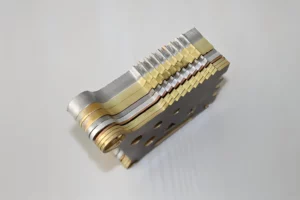In the evolving world of manufacturing, continuous innovation in materials and engineering is crucial for advancing production processes. This article explores how breakthroughs in material science and precision engineering are driving improvements in fabrication methods. By focusing on new material properties, enhanced machining techniques, and collaborative design processes, we examine a forward-thinking approach that is transforming operations in the sheet metal cutting service.

Advances in Material Science
One of the key areas of progress in manufacturing is the development of new alloys and composite materials that offer superior performance characteristics. Research into high-strength, lightweight metals has paved the way for materials that withstand high temperatures and resist corrosion more effectively. These innovations allow engineers to push the boundaries of design, reducing material waste and improving overall production efficiency. Improved material formulations not only enhance durability but also contribute to more precise cutting operations, thereby increasing the reliability and repeatability of fabrication processes. Such material innovations are integral to sustaining competitive production lines while maintaining strict quality standards.
Integration of Precision Engineering
Precision engineering has become a cornerstone of modern fabrication, significantly influencing the way production systems are designed and operated. With the advent of computer-aided design (CAD) and computer numerical control (CNC) technologies, manufacturers can now achieve unparalleled accuracy in metal cutting. Advanced algorithms optimize cutting paths and reduce deviations, which is especially important when dealing with intricate designs and complex geometries. Real-time monitoring and feedback systems further enhance precision by allowing operators to detect and correct any discrepancies immediately. This level of control is transforming how manufacturers approach challenges in metal forming, ensuring that each operation is as efficient and error-free as possible while upholding stringent quality benchmarks.
Collaborative Innovation in Design and Production
Modern manufacturing thrives on the integration of collaborative processes that bridge the gap between design and production. Cross-functional teams, including engineers, designers, and production specialists, work together to streamline workflows and develop innovative solutions tailored to specific project needs. This collaborative approach has led to the creation of customizable production lines that can rapidly adapt to new design challenges. For instance, incorporating predictive analytics and simulation models during the design phase allows teams to anticipate potential issues and make adjustments before the physical cutting process begins. Such strategic integration of feedback not only improves product outcomes but also reduces time-to-market, enabling manufacturers to stay ahead in a highly competitive environment.
Sustainability and Future Perspectives
Sustainability has emerged as a critical consideration in manufacturing. The development of eco-friendly materials and energy-efficient cutting techniques is becoming increasingly important. Manufacturers are adopting practices that minimize waste and reduce energy consumption throughout the production cycle. By leveraging innovations in both material science and precision engineering, production processes are being reimagined to support environmental goals without compromising on quality or efficiency. The future of the sheet metal cutting service lies in the seamless integration of these sustainable practices with advanced technological tools. This dual focus on innovation and sustainability is set to redefine industry standards and drive long-term growth.
Conclusion
As the manufacturing industry moves forward, the fusion of innovative materials and precision engineering is setting new benchmarks for production excellence. Through advanced research, cutting-edge technologies, and collaborative design practices, manufacturers can achieve greater efficiency, higher accuracy, and a more sustainable production process. The ongoing evolution in these areas underscores the transformative potential of modern fabrication techniques, ensuring that the sheet metal cutting service remains at the forefront of industrial innovation.
